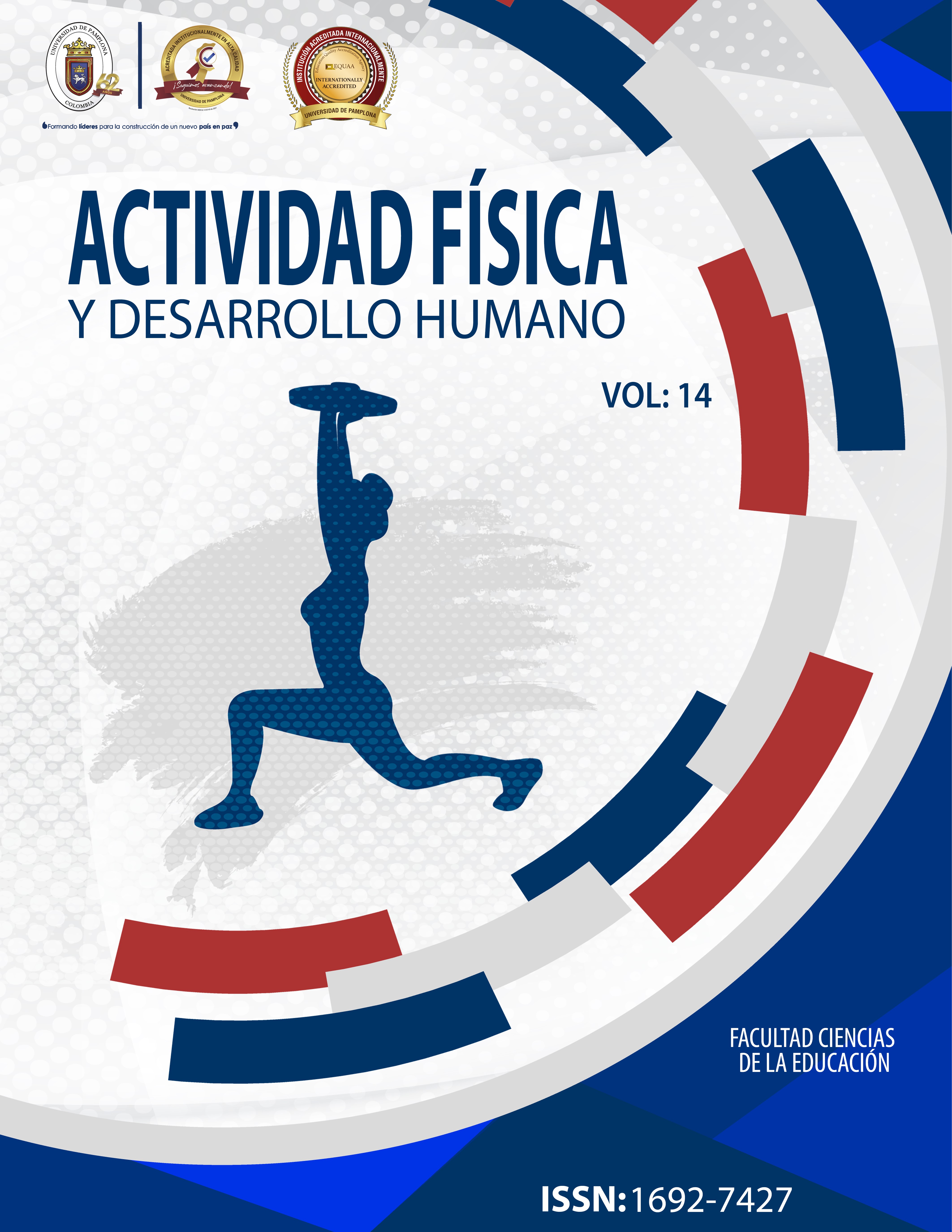Coordinative capacity (rhythm) through colombian folk dance in people with down syndrome
Keywords:
Rhythm, Folk Dance, Down SyndromeAbstract
Introduction: Colombian folk dance contributes to the development of harmonic movement patterns and potentiates the rhythm in those who practice it, but the real problem of the practice without knowledge of the dance base, which leads to hinder the ideal development of the capacities coordination, specifically of the rhythm and if you work in a population with Down Syndrome, it increases the problem, because it can generate a decrease in the quality of life of this population. Objective: The present study aimed to determine the effect of a Colombian folk dance program on the coordination capacity, specifically the rhythm of people with Down syndrome from the Champions of Love Foundation in the city of Tunja during the year 2022. Methodology: A quantitative approach is applied through a Quasi-experimental Design, in addition to a program of 16 sessions of Colombian folk dance on the coordinative capacity of rhythm to 12 people with Down syndrome from the Champions of Love Foundation of the city of Tunja, evaluated through the test by Mira Stamback. Results: As shown in the table in the pre and posttest that was applied and after the application of the Colombian folk dance program of 16 sessions, the population had an improvement of 44% in the coordinative capacity of the rhythm. Conclusion: the above shows that the program had a positive effect on the 12 people with Down syndrome from the Champions of Love Foundation in the city of Tunja.
Downloads
References
Aguilar, A. (2019). Actividad Física Musicalizada Para Mejorar La Capacidad Aeróbica En El Adulto Mayor de Indeportes de Tunja.
Albin, C. M. (2016). The benefit of movement: Dance/movement therapy and Down syndrome. Journal of Dance Education, 16(2), 58-61.
Caballero Macías, M. (2017). La danza como instrumento para la mejora de las habilidades locomotoras en niños con Síndrome de Down.
Castillo, M. León, M., Mondaca, J., Bascuñán, S., y Beltrán, K (2016). El Ritmo Y La Música Como Herramienta De Trabajo Para La Actividad Física Con El Adulto Mayor Revista Ciencias de la Actividad Física UCM. 17(1), 87-99, 2016
Clark, L. M. (2011). Movement Patterns and Quality of Life for Individuals with Down Syndrome: An Overview of Dance as Physical Therapy. Logos: A journal of undergraduate research, 4.
De Farias, L. H. S., & Teixeira-Machado, L. (2016). Behind the dance: educational, emotional and social contexts in Down syndrome. International Journal of Humanities Social Sciences and Education (IJHSSE), 3(1), 20-23.
Escalona Concha, E. (2006). Las danzas del folklore chileno aplicadas en los niños con Síndrome de Down.
Guzmán Vargas, L. M., & López, L. K. (2020). La danza como estrategia pedagógica para disminuir la agresividad en niños con síndrome de Down (Doctoral dissertation, Corporación Universitaria Minuto de Dios).
Gutiérrez-Vilahú, L., Massó-Ortigosa, N., Costa-Tutusaus, L., Guerra-Balic, M., & Rey-Abella, F. (2016). Effects of a dance program on static balance on a platform in young adults with Down syndrome. Adapted Physical Activity Quarterly, 33(3), 233-252.
Hernández, S. Fernández, C y Baptista P. (2010), metodología de la investigación. Mc Graw hill.
Laos Pascuaza, M. (2018). La Danza como experiencia de interacción social en niños con Síndrome de Down (Doctoral dissertation, Corporación Universitaria Minuto de Dios).
McGuire, M., Long, J., Esbensen, A. J., & Bailes, A. F. (2019). Adapted dance improves motor abilities and participation in children with Down syndrome: A pilot study. Pediatric Physical Therapy, 31(1), 76-82.
Mantilla, M. Et. Al. (2016). Comparación de la capacidad rítmica en personas con discapacidad intelectual, síndrome de Down y personas sin discapacidad. Apunts. Educación Física y Deportes, 124 (2º trimestre abril-junio), 27-34.
Mateus Rojas, E. (2021). La danza urbana, una destreza eficaz y didáctica para fortalecer la acción motriz de los niños con síndrome de Down.
Millatureo, S. M. (2012). Expresión Corporal Y Danza Educativa Para Estudiantes Con Síndrome De Down, Como Medio De Creatividad Y Comunicación (Doctoral dissertation, Doctoral Dissertation, Universidad Austral De Chile). http://cybertesis. uach. cl/tesis/uach/2012/ffm672e/doc/ffm672e.pdf).
Sánchez Herranz, M. (2020). Beneficios de la psicomotricidad en el alumnado con síndrome de Down: propuesta de danza vivenciada.
Pedroza, N. (2016). Danzaterapia Una Experiencia De Movimiento Psicoterapéutico.
Pira, J. (2016). La Danza Folclórica Como Estrategia Pedagógica Para Contribuir En El Trabajo En Equipo Entre Géneros
Riascos, V. (2019). Musicoterapia En El Fortalecimiento De La Comunicación No Verbal, En Jóvenes Con Síndrome De Down.
Reinders, N., Bryden, P. J., & Fletcher, P. C. (2015). Dancing with Down syndrome: a phenomenological case study. Research in Dance Education, 16(3), 291-307.
Zárate, N. M. D. S. Análisis de la danza como terapia en niños de 6 a 9 años con Síndrome de Down de la Fundación Saraki (Doctoral dissertation, UNIVERSIDAD NACIONAL DE ASUNCIÓN).
Downloads
Published
How to Cite
Issue
Section
License
Copyright (c) 2023 ACTIVIDAD FÍSICA Y DESARROLLO HUMANO

This work is licensed under a Creative Commons Attribution-NonCommercial-NoDerivatives 4.0 International License.











